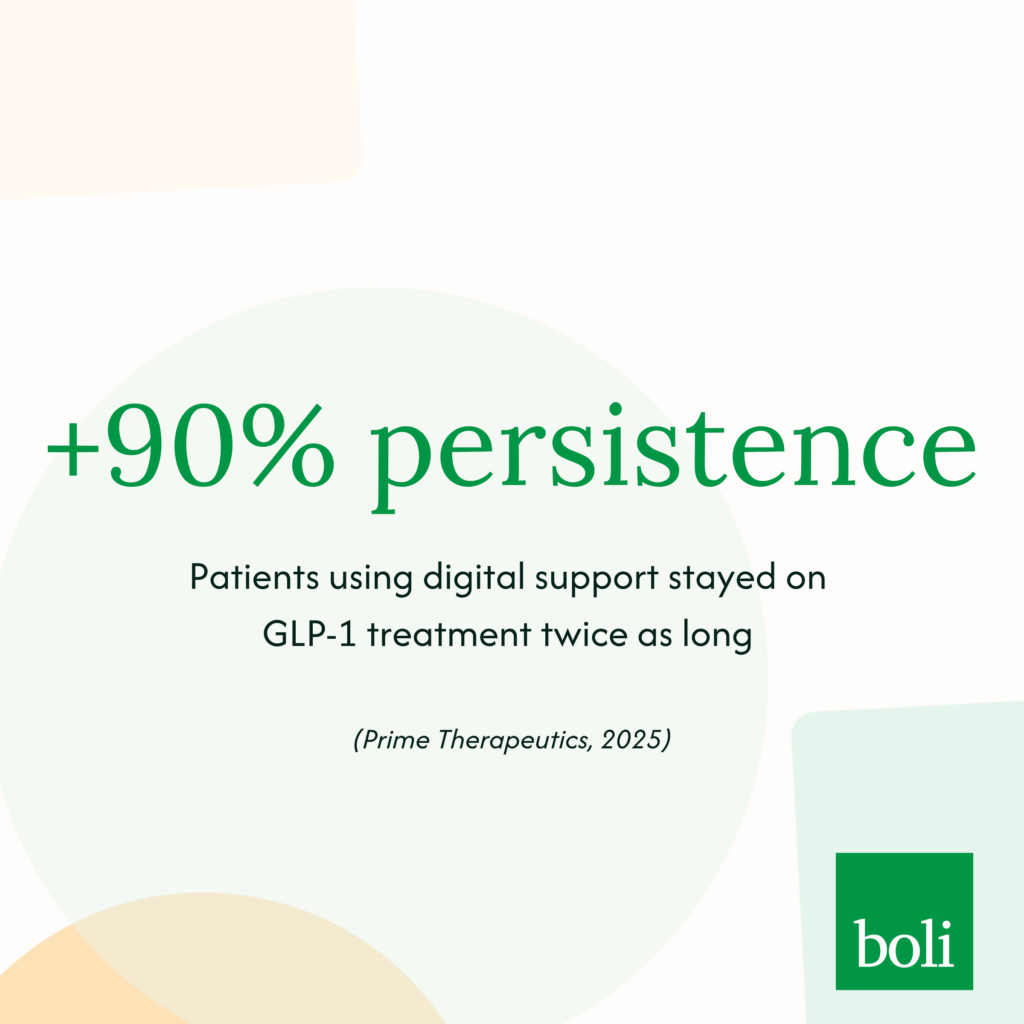GLP-1 receptor agonists like semaglutide (Wegovy, Ozempic) and tirzepatide (Mounjaro) are transforming the treatment landscape for obesity and type 2 diabetes. Their clinical results are compelling: substantial weight loss, improved glycemic control, and potential cardiovascular benefits.
But in the real world, persistence remains a major challenge.
GLP-1 discontinuation: a critical problem hiding in plain sight
Clinical trials show sustained weight loss over 68 to 104 weeks. Yet in routine care, 30 to 40% of patients discontinue GLP-1 therapy within the first 6 months. By the end of the first year, more than half may have stopped treatment.
Reasons vary — gastrointestinal side effects, cost, lack of support, or unrealistic expectations — but the outcome is the same: weaker results, lost momentum, and missed health benefits.
And this isn’t just a patient-level issue. In several countries, health authorities have begun to raise concerns about the value-for-money of GLP-1 therapies when persistence is low. If patients stop early, the expected long-term benefits — and the economic rationale behind high-cost medications — may not materialize.
Persistence drives outcomes. And outcomes drive value.
In a value-based healthcare environment, real-world persistence is directly tied to market access and reimbursement. Without it, even the most promising therapies can underperform — clinically and economically.
For pharmaceutical manufacturers, low persistence means:
- Less favorable cost-effectiveness ratios
- Greater scrutiny in payer negotiations
- Weakened real-world evidence (RWE) for future label expansion
In other words: persistence is no longer just a clinical KPI — it’s a strategic lever.
Boli: a DTx purpose-built to support GLP-1 users
This is where Boli steps in.
Boli is a digital therapeutic specifically designed to support patients on GLP-1 medications. From the first injection to long-term lifestyle transition, Boli offers multilingual, personalized, evidence-based guidance — through a digital companion that evolves with the patient.
But more than that, that kind of DTx has been shown to significantly improve treatment persistence.
A 2025 study from Prime Therapeutics demonstrated that patients using a structured digital behavioral support tool alongside GLP-1 treatment had a 90% higher persistence rate at 12 months compared to standard care. That’s a game changer — for outcomes, for economics, and for long-term therapeutic success.

Beyond support: real-world data at scale
As a digital therapeutic, Boli not only helps patients stay on therapy — it also generates high-quality real-world data (RWE) at population scale.
Boli collects:
- Adherence patterns
- Reported side effects
- Behavioral and nutritional trends
- Patient-reported outcomes (PROs)
- Engagement and satisfaction metrics
This data can fuel regulatory discussions, payer dossiers, pharmacoeconomic models, and real-time improvements in care. It transforms a drug from a product into a platform — with actionable insights built in.
A new hybrid standard: molecule + DTx
GLP-1s offer a unique metabolic window — a moment when biology, behavior, and motivation align. But this window doesn’t last forever. Patients need help to seize it, consolidate progress, and adopt sustainable changes.
Boli is built for this exact purpose. It makes treatment initiation easier, manages expectations, helps prevent drop-off, and supports the long-term transition to healthier habits. It doesn’t replace the drug — it activates its full potential.




